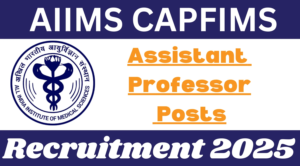Noise: The Unseen Chaos in Human Judgment

The Flaw in Our Judgment: Beyond Biases
Daniel Kahneman, the Nobel laureate renowned for his groundbreaking work on cognitive biases, once again challenges our understanding of human decision-making in his co-authored book, “Noise: A Flaw in Human Judgment.” While his previous work, “Thinking, Fast and Slow,” delved deep into the systematic errors in our thinking, “Noise” shifts focus to a more subtle yet pervasive issue: the random variability in judgments made by individuals or groups when faced with the same problem.
The Unwanted Variability: Defining Noise
Kahneman, along with Olivier Sibony and Cass R. Sunstein, introduces the concept of “noise” as the unwanted variability in judgments that occurs when different people reach different conclusions about the same question. This isn’t about systematic errors or biases, which have been extensively studied, but rather about the inexplicable inconsistencies in human judgment. The authors convincingly argue that noise is a silent epidemic, affecting everything from medical diagnoses to legal rulings, from hiring decisions to financial assessments.
The Sources of Noise: Why Our Judgments Differ
The book meticulously unveils the various sources of noise. One primary culprit is individual differences. Our unique experiences, personalities, and cognitive styles inevitably influence how we perceive and interpret information. Even experts in their fields can exhibit significant variations in their judgments. Another source of noise lies in the ambiguity of information itself. Often, the data we rely on is incomplete, uncertain, or open to multiple interpretations. This ambiguity provides fertile ground for noise to flourish. Organizational factors also contribute to noise, such as inconsistent procedures, unclear guidelines, and the pressure to conform.
The Real-World Impact: How Noise Hurts Us
A particularly compelling aspect of the book is its emphasis on the practical implications of noise. The authors demonstrate how noise can lead to unfairness, inefficiency, and missed opportunities. For instance, in the realm of criminal justice, noise in sentencing can result in disproportionate punishments for similar crimes. In healthcare, inconsistent diagnoses can lead to suboptimal treatment plans. The book is replete with real-world examples that underscore the far-reaching consequences of noise.
Addressing the Noise Problem: Strategies for Consistency
To address the problem of noise, the authors propose a comprehensive framework. They advocate for greater transparency in decision-making processes, encouraging explicit reasoning and documentation. They emphasize the importance of data-driven approaches, using algorithms and statistical models to reduce human variability. Additionally, the book highlights the role of organizational culture in fostering a noise-conscious environment. By creating a culture of open inquiry, experimentation, and feedback, organizations can significantly mitigate the impact of noise.
Limitations and the Road Ahead: Beyond This Book
While “Noise” is a meticulously researched and well-argued book, it is not without its limitations. Some critics argue that the authors oversimplify the complex interplay between noise and bias, suggesting that reducing noise alone can lead to optimal decision-making. Moreover, the book primarily focuses on the negative consequences of noise, neglecting to explore potential benefits, such as increased creativity or adaptability.
Nevertheless, “Noise” is a groundbreaking work that sheds light on a previously overlooked aspect of human judgment. By revealing the insidious nature of noise, the book challenges us to rethink our decision-making processes and strive for greater consistency and fairness. It is a must-read for anyone interested in improving the quality of decisions in organizations and society as a whole.










